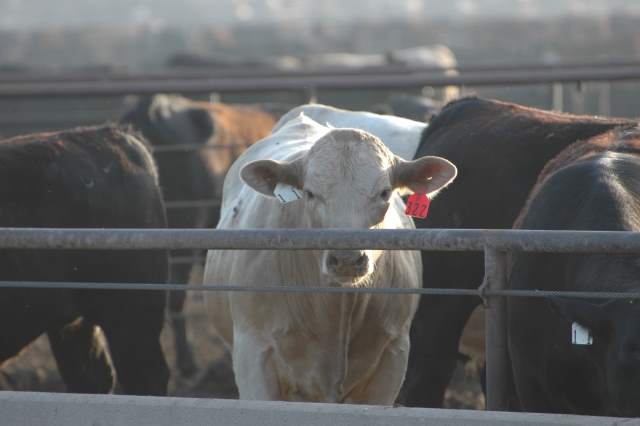It won’t be easy, but the coming years may be “shining times” for beef and cattle producers. More people will want more and better food and will be better able to pay for it. For producers, especially cattle feeders, it will require that you do business differently than you have in the past.

Lots of speakers, to break the ice and get the audience to pay attention, announce in jest that there will be a test. During the recent Merck Cattle Feeders Business Summit, Pete Anderson opened with that line. But he was dead serious.
“I have never seen as much risk or as much opportunity in the beef business as there is now,” he told cattle feeders. “And there will be a test. I won’t administer the test; the global economy will administer the test over the next 20 years or so. If you pass, you can stay in business. And your career might be more rewarding than you could ever imagine.”
Anderson, research director for Midwest PMS, told cattle feeders attending the Merck Summit that farming and food production is no longer a local business that serves a local market. “They are now part of a global marketplace with scaled risk and scaled opportunities. There are more people around the world who will affect how your business turns out than there have ever been.”
That means, he says, that cattle producers will need to react to those external forces. “And an individual cattle operation is subject to these external forces more than ever before. Each individual response will determine the success of each business. The collective response will determine the success of the industry.”
Supply management
For cattle feeders, that means a change in how they have traditionally operated. “If you’re not involved in supply management, you’re going to have a hard time getting cattle,” he says. “You’ve got to find ways to control your inventory—you’ve got to own them longer, you’ve got to influence them longer. You’ve got to have alliances, you’ve got to work with people in the feeder cattle business in completely different ways than you’ve done in the past.”
In short, he told cattle feeders that they will have to gain access to feeder cattle earlier and earlier in those calves’ lives. “Pretty soon, you’re going to have to catch them coming out of the cow if you’re going to have a chance to feed them.”
Or maybe before the rancher turns the bulls out with the cows. That means cattle feeders will have to learn genetics and genomics and how to use those tools to their advantage, he says.
For example, consider the steady increase in carcass weights that the industry has been able to achieve. While part of that is clearly due to production technologies such as implants and beta agonists, Anderson thinks the industry has just about reached its potential there. However, the prospects for genetic improvement are still available to the industry.
And the evidence that genetic improvement works is overwhelming. It used to be that the number of truly high-quality, high grading and high performing calves was limited. “Now there are hundreds of thousands” of those kind of feeder calves, he says. “There’s still plenty of stuff that need to be upgraded a little, but the number of good cattle is greater than it’s ever been by a significant margin. That’s an opportunity that didn’t exist just a few years ago.”
But the increase in demand for high quality beef, especially by branded beef programs, will change how feeders feed and market their cattle, in Anderson’s opinion.
“Think about hitting specifications that somebody else will write for you. You might have some input, but somebody else is going to write them,” he says. “All our management practices will have to be certified and our staff trained. You’ll have to show that they do what they’ve been trained to do because some brand is going to require that. That’s an opportunity. We’re not there yet, but it’s on the way.”
Ranch impacts
That means, he says, that feedyards will no longer buy feeder cattle just based on reputation. “It’s going to require documentation, not what we think they are or what they may have been last year. You won’t get to participate without it. So we’re going to redefine what ‘commodity’ really is.”
But the opportunity for return from target outcome management will be greater as well. “We can invest more dollars per head doing stuff like that because the value and value differences are greater than they’ve ever been before. So things like a few buck for genetic evaluation, understanding the health of incoming cattle better, sorting systems—those things make economic sense in the era we’re entering into.”
It’s possible, Anderson told cattle feeders, that he could be wrong. “But I will tell you this: if you’re not involved in a strategic planning process where you really look at those external influences and really think about what they mean to you and the long-term for your business, you’re taking a risk that I think is too great.”
Anderson says cattle feeders will do business differently. “The way we’ve done things has been great for us in lots of ways. But it’s not the way we’re going to continue to do business. We’ve got to change—faster than we’re used to and in a way we’re really not comfortable with. But we’re changing fast now.”
Other trending BEEF headlines:
10 Utility Tractors For 2014 That Offer More Power & Comfort
Should You Be Worried About The Predicted Polar Vortex Coming This Fall?
Beef Demand Roars, Record Cattle Prices Projected Into 2015
Feedlot Tour: Triangle H Grain & Cattle Co.
About the Author(s)
You May Also Like


.png?width=300&auto=webp&quality=80&disable=upscale)
